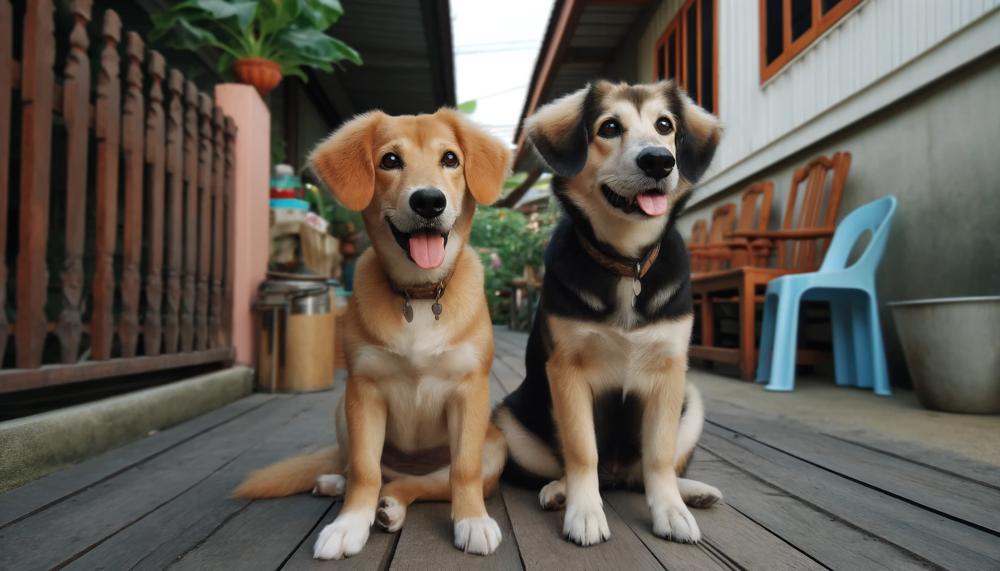Do you have trouble getting your pet friend to sit when you tell them to? Don’t worry; this is a problem that many dog lovers have. You shouldn’t worry, though, because there are reasons for your dog’s stubbornness and ways to deal with it.
This blog post will talk about some of the reasons your dog might not want to sit and give you useful training tips.
You’ll have a better understanding of your dog’s behavior and the tools you need to teach them the “sit” order by the end of this article. Get ready to teach your puppy how to be a smart and obedient friend.
So, why my dog won’t sit on bottom?
There could be several reasons why your dog is having trouble sitting. Here are some possibilities:
- Hip Problems: Conditions like hip dysplasia or arthritis, or even a temporary inflammatory response, could make sitting uncomfortable for your dog.
- Knee Pain: Conditions like luxating patellas, common in small-breed dogs, or a torn cruciate ligament could cause pain when your dog tries to sit.
- Back Pain: Conditions like intervertebral disc disease or a herniated disk could make it painful for your dog to sit.
- Anal Gland Problems: If your dog’s anal glands are inflamed, it could be painful for them to sit.
- Painful Tail: Some dogs develop a condition known as “limber tail”, which can cause pain and might be the reason your dog is avoiding sitting.
If your dog is showing signs of discomfort when trying to sit, it’s important to consult with a veterinarian to identify the cause and get appropriate treatment1. Please note that this information is not a substitute for professional veterinary advice.
Best Food For Dogs
Table of Contents

When it comes to selecting the optimal food for your canine companion, there are numerous essential aspects that must be taken into consideration.
These factors not only have a significant impact on your dog’s overall health and well-being, but they also play a vital role in keeping them content and fulfilled with their meals.
For the Editor’s Choice section, it is imperative to thoroughly analyze and consider these factors to recommend the best food for dogs.
Your dog’s breed and size:
Different breeds and sizes of dogs have varying nutritional requirements. For instance, larger breeds may necessitate increased protein and calorie intake, while smaller breeds may require more fat for energy.
Familiarizing yourself with your dog’s breed and size can assist you in selecting a food that is tailored to meet their specific needs.
Food allergies and sensitivities:
Similar to us, dogs can also experience allergies or sensitivities to certain ingredients in their food. Common allergens for dogs include wheat, corn, and soy.
It is crucial to be aware of your dog’s allergies or sensitivities and choose a food that avoids these ingredients.
Personal preferences:
Some dogs have particular preferences when it comes to their food, such as enjoying certain flavors or textures.
Taking your dog’s personal preferences into account can ensure that they relish their meals and continue to consume a balanced diet.
Complete and balanced nutrition:
Selecting a dog food that provides complete and balanced nutrition is imperative, meaning it contains all the necessary nutrients for your dog’s health.
Look for an AAFCO statement on the packaging, which indicates that the food meets the minimum standards of complete and balanced nutrition.
Considering these crucial factors while selecting the best food for your dog is paramount as it guarantees they receive proper nutrition, avoids potential health issues from allergies or sensitivities, and keeps them satisfied with their meals.
How To Help A Dog That Won’t Sit On Bottom
There are a variety of effective approaches to train your dog to sit on their bottom. These techniques not only teach your dog an important skill, but also foster discipline and respect between you and your furry companion.
Here are some helpful techniques to consider when training your dog to sit:
- Understand your dog’s behavior: It is crucial to recognize your dog’s behavior patterns to determine the most effective training method. Some dogs may respond better to positive reinforcement, while others may require more assertive commands.
- Be patient and consistent: Training a dog requires time and consistency is key. Be patient and keep in mind that each dog learns at their own pace.
- Use incentives: Rewarding your dog with treats or praise is a great way to motivate and reinforce the desired behavior of sitting. This will also create a positive association with the command.
- Begin in a distraction-free environment: Start training in a quiet and distraction-free setting, such as inside your home. As your dog improves their focus, gradually introduce distractions to keep challenging them.
- Consistency among family members: It is essential for all family members to be consistent with training techniques and expectations. This will avoid confusion for your dog and ensure successful training.
- Consider breed differences: Some breeds may be more resistant to training, but this presents an opportunity to deepen the bond with your dog. Be patient and understanding of breed differences when training.
- Celebrate every progress: It’s important to manage expectations and celebrate every step forward in the training process. This will keep both you and your dog motivated and encouraged.
Furthermore, it’s vital to address any potential medical issues or discomfort that may be preventing your dog from sitting on their bottom. If the issue persists, seek guidance from a veterinarian for further assistance.
With patience, consistency, and understanding of your dog’s behavior, you can successfully train them to sit on their bottom and strengthen your bond with them.
Conclusion
Overall, teaching your dog to sit in order might be hard at times, but it is definitely possible if you know how to do it right and understand how they behave.
This blog post talked about some possible reasons your dog might not want to sit and gave you useful tips for training him to do it. Some of these include using the correct techniques, figuring out what the real problems are, using positive feedback, and being steady and patient during the teaching process.
Your pet friend can become a well-behaved and obedient friend who will happily sit on order if you both work at it and are consistent.






